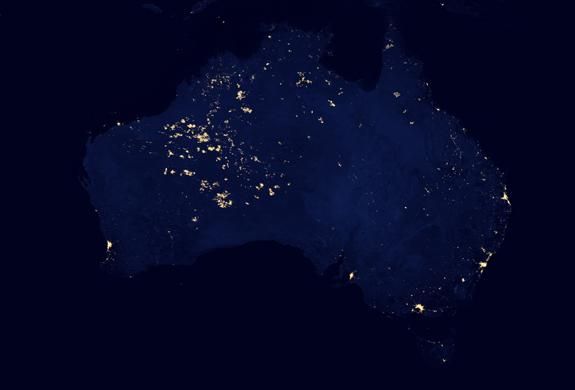Australia is Burning, And It’s Only Going to Get Worse as the World Warms
Across Australia wildfires are raging. And yes, there is a climate connection
/https://tf-cmsv2-smithsonianmag-media.s3.amazonaws.com/filer/2013010901501701_09_2013_australia-fire-2.jpg)
Across Australia, record breaking temperatures are stoking brush fires that have in the past few days alone burned down more than 64,000 acres in the country’s southeastern province of New South Wales and at least 50,000 acres in nearby Tasmania. The fires have claimed the town of Dunalley and left 100 people missing. The Guardian:
Fire officials declared five areas of southern NSW as catastrophic, meaning if fires ignited they could not be controlled, and advised people to evacuate.
Though the fires in Tasmania were not unexpected—January marks the beginning of the region’s annual fire season—the anomalously high heat had set the stage for “one of the worst fire danger days on record.”
A respite in the surging temperatures in the past day offered a “brief reprieve” from the fires, though 200 are still burning, and more activity is expected as the temperature climbs into the weekend. But the current outbreak could also be seen as a sign of Australia’s future.

According to a 2007 study published in the journal Climatic Change, the presently-raging fires are just a portent of things to come. By 2050, says the report, the risk of fire in the New South Wales region in southeastern Australia is set to climb by 25 percent. By 2100, extreme fires will be 50 to 100 percent more likely than they are today, depending on how aggressively we go about curbing future greenhouse gas emissions. These changes in Australia’s flammability, the authors say, are driven by rising temperatures and plummeting humidity levels over the southern continent.
That study’s major findings are parroted by an official report by the Australian government’s Bureau of Meteorology that tracked fire activity through their measure, the “Forest Fire Danger Index” (FFDI).
A key finding of this study is that an increase in fire-weather risk is likely at most sites in 2020 and 2050, including the average number of days when the FFDI rating is very high or extreme. The combined frequencies of days with very high and extreme FFDI ratings are likely to increase 4-25% by 2020 and 15-70% by 2050. For example, the FFDI results indicate that Canberra is likely to have an annual average of 25.6-28.6 very high or extreme fire danger days by 2020 and 27.9-38.3 days by 2050, compared to a present average of 23.1 days.
Across the country this trend is repeated, with the number of days expected to be “fire days” climbing. And, again, the surge is attributed to climbing temperatures and reduced rainfall—both projected effects of climate change. Indeed, this summer marked the first time in a decade that New South Wales was not in drought conditions, another respite researchers don’t expect to last for long.
More from Smithsonian.com:
Here’s What $110 Million in Fire Damage Looks Like
Devastating Colorado Wildfires Most Recent in Decades-Long Surge
Fires Are Escaping Our Ability to Predict Their Behavior
Climate Skepticism Could Wipe Out Whole Towns in Australia
/https://tf-cmsv2-smithsonianmag-media.s3.amazonaws.com/accounts/headshot/smartnews-colin-schultz-240.jpg)
/https://tf-cmsv2-smithsonianmag-media.s3.amazonaws.com/accounts/headshot/smartnews-colin-schultz-240.jpg)